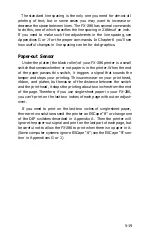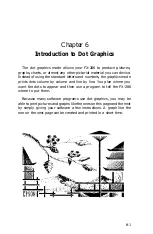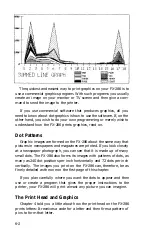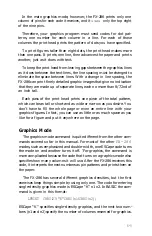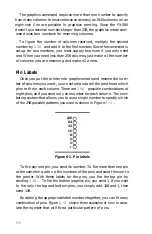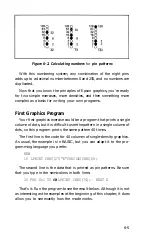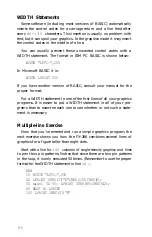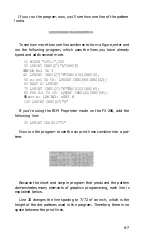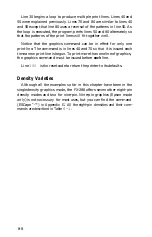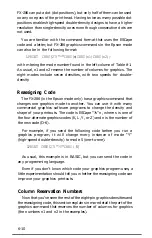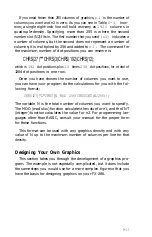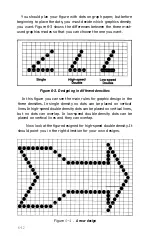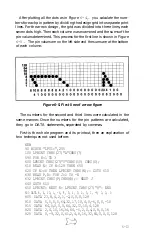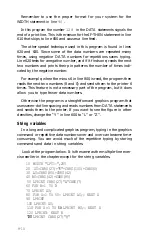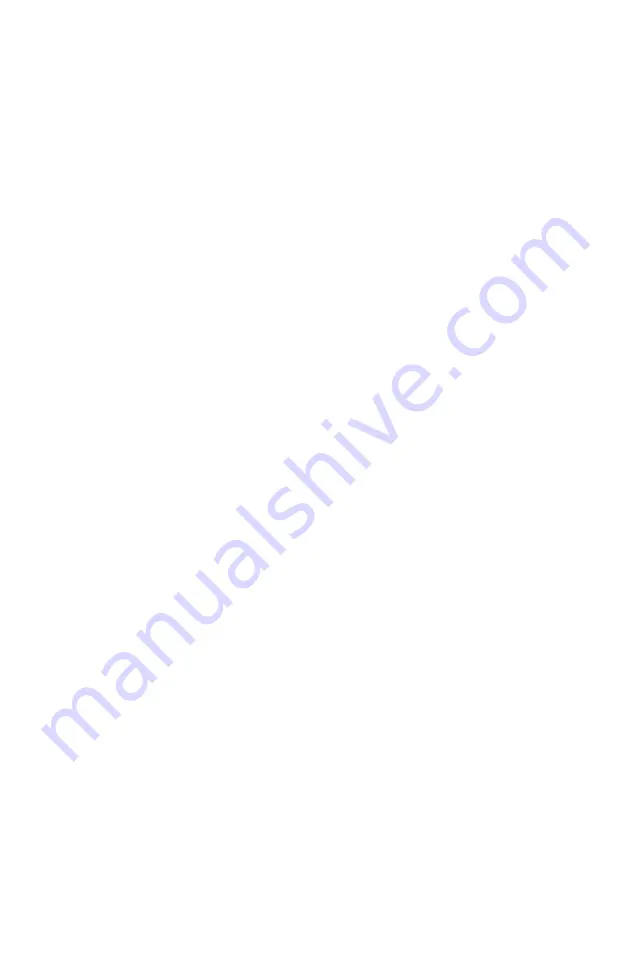
Remember to use the proper format for your system for the
WIDTH statement in line
90.
In this program the number
128
in the DATA statements signals the
end of a print line. This is the reason for the IF-THEN statement in line
610 that skips to line 650 and causes a line feed.
The other special technique used in this program is found in lines
620 and 630. Since some of the data numbers are repeated many
times, using negative DATA numbers for repetitions saves typing.
Line 620 tests for a negative number, and if it finds one, reads the next
two numbers and prints their pin patterns the number of times indi-
cated by the negative number.
For example, when the minus 6 in line 800 is read, the program then
reads the next two numbers (8 and 0) and sends them to the printer 6
times. This feature is not a necessary part of the program, but it does
allow you to type fewer data numbers.
Otherwise the program is a straightforward graphics program that
uses seven-dot line spacing and reads numbers from DATA statements
and sends them to the printer. If you want to see the figure in other
densities, change the “Y” in line 600 to “L” or “Z”.
String variables
In a long and complicated graphics program, typing in the graphics
command or repetitive data numbers over and over can become time-
consuming. You can avoid much of the repetitive typing by storing
commands and data in string variables.
Look at the program below. It is the same as the multiple-line exer
cise earlier in the chapter except for the string variables.
10 WIDTH "LPT1:",255
20 G$=CHR$(27)+"K"+CHR$(100)+CHR$(0)
30 A$=CHR$(85)+CHR$(42)
40 B$=CHR$(42)+CHR$(85)
50 LPRINT CHR$(27)"A"CHR$(7)
60 FOR R=1 TO
3
70 LPRINT G$;
80 FOR X=1 TO 50: LPRINT A$;: NEXT X
90 LPRINT
100 LPRINT G$;
110 FOR X=1 TO
50:
LPRINT B$;: NEXT X
120 LPRINT: NEXT R
130
LPRINT CHR$(27)"@"
6-14
Summary of Contents for FX-286 - Impact Printer
Page 1: ......
Page 2: ......
Page 35: ......
Page 40: ...2 4 ...
Page 48: ...3 8 ...
Page 56: ...4 8 ...
Page 91: ...6 16 ...
Page 118: ...C 10 ...
Page 133: ...Epson Mode Commands G 5 ...
Page 134: ...G 6 ...
Page 166: ...H 4 ...
Page 173: ...International Character Width Table Roman characters Italic characters I 7 ...
Page 174: ...I 8 ...
Page 180: ...J 6 ...
Page 181: ...IBM Proprinter Mode Commands J 7 ...
Page 182: ...J 8 ...
Page 202: ...J 28 ...
Page 208: ...K 6 ...
Page 216: ......
Page 220: ...IBM Mode See Appendix J for detailed explanations of codes Character Width Pitch ...
Page 221: ...Notes ...
Page 223: ......

